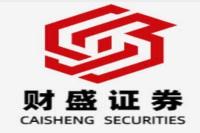A+H Listing Frenzy: Why Top Chinese Companies are Heading to Hong Kong
Meta Description: Dive deep into the surging trend of A+H listings, exploring the motivations behind leading Chinese companies like Sanhua Intelligent Control, Haitian Flavouring & Food, and Hengrui Medicine choosing dual listings in both mainland China and Hong Kong. Discover the strategic advantages, market dynamics, and future implications of this exciting development in the Chinese stock market.
Are you intrigued by the recent surge in Chinese companies opting for dual listings – the coveted A+H structure? It's a whirlwind of activity, a fascinating dance between mainland China's robust A-share market and the international appeal of Hong Kong’s H-share market. This isn't just some fleeting trend; this massive shift signifies a profound evolution in China's economic landscape. Think of it as a high-stakes poker game, with giants like Sanhua Intelligent Control, Haitian Flavouring & Food, and Hengrui Medicine – already established A-share behemoths – strategically placing their chips on the Hong Kong table. Why? The reasons are complex, weaving together a tapestry of strategic ambitions, access to global capital, and a desire to elevate their international brand profiles. This isn't just about more money; it’s about strengthening global reach, diversifying investor bases, and ultimately, cementing their positions as global industry leaders. This detailed analysis will equip you with the knowledge to understand the nuts and bolts of this phenomenon, its implications for investors, and its potential impact on the future of Chinese businesses. Prepare to be amazed by the sheer scale of this trend and its profound implications for the global financial world. So buckle up, because we're about to embark on an insightful journey into the heart of the A+H listing surge!
A+H Listings: A Deep Dive into the Phenomenon
The A+H listing model, where companies list shares on both the Shanghai or Shenzhen Stock Exchanges (A-shares) and the Hong Kong Stock Exchange (H-shares), has witnessed a significant upswing this year. This isn't just a few companies jumping on the bandwagon; we're talking about a significant number of established, large-cap enterprises making a strategic move. What's driving this wave? Several key factors are at play, each contributing to this compelling trend.
Firstly, access to a broader pool of international capital is a major draw. The Hong Kong Stock Exchange provides access to a global investor base, significantly surpassing the reach of the mainland Chinese markets. This opens doors to a wider range of funding opportunities, allowing these companies to fuel expansion plans, research and development initiatives, and strategic acquisitions on a much larger scale. Think of it like unlocking a vault of previously inaccessible resources.
Secondly, enhancing international brand recognition and reputation is paramount. Listing in Hong Kong elevates a company's profile on the global stage. It's a statement of confidence, a signal that the company is ready to compete with the best in the world. This improved visibility can attract top talent, facilitate strategic partnerships, and ultimately, boost brand value.
Thirdly, diversifying investor base and reducing reliance on domestic markets reduces risk. By tapping into international markets, these companies lessen their vulnerability to fluctuations in the Chinese economy. This diversification strategy enhances overall financial stability and resilience.
Case Studies: Key Players in the A+H Surge
Let's examine some prominent examples to better understand the strategic thinking behind these moves:
-
Sanhua Intelligent Control: This company, a major player in the robotics sector, initially planned a GDR (Global Depositary Receipt) listing but shifted to an H-share listing instead. This strategic shift likely reflects a greater focus on the Asian market and a desire for smoother access to capital within the region. The move showcases a dynamic adaptation to market conditions and a keen understanding of the nuances of different capital markets.
-
Haitian Flavouring & Food: A global leader in condiments, Haitian's ambition to expand its international footprint is evident in its pursuit of an H-share listing. This aligns with their stated goal of catering to evolving consumer demands for diverse and healthy products. This strategic move is a significant step in their worldwide expansion strategy.
-
Hengrui Medicine: A pharmaceutical giant, Hengrui's decision to pursue an H-share listing underscores their commitment to innovation and global reach. Their focus on innovative drugs and their strong growth trajectory make them a particularly attractive proposition for international investors. The H-share listing strengthens their position as a leading player in the global pharmaceutical landscape.
The Strategic Advantages of A+H Listings
The benefits of an A+H listing are multifaceted and significant:
| Advantage | Description |
|----------------------|----------------------------------------------------------------------------------------------------------------|
| Increased Capital Access | Tap into a vast pool of international capital for expansion and growth. |
| Enhanced Brand Visibility | Elevate international brand recognition and attract top talent. |
| Reduced Risk Diversification | Mitigate risks associated with relying solely on domestic markets. |
| Improved Corporate Governance | Often necessitates improved corporate governance to meet international standards. |
| Access to Global Investors | Attract a diverse range of investors with varying risk tolerances and investment strategies. |
| Greater Liquidity | Potentially increased liquidity for shares, making it easier for investors to buy and sell. |
Challenges and Considerations for A+H Listings
While the allure of A+H listings is undeniable, companies must carefully consider potential challenges:
-
Regulatory hurdles: Navigating the complex regulatory environments of both mainland China and Hong Kong requires significant resources and expertise.
-
Compliance costs: Meeting the stringent regulatory and reporting requirements of both markets can be expensive.
-
Currency fluctuations: Exposure to fluctuations in exchange rates between the RMB and the Hong Kong dollar (HKD) can impact profitability.
-
Market volatility: Both the A-share and H-share markets are subject to periods of volatility, impacting the valuation of the company's shares.
The Future of A+H Listings
The current wave of A+H listings suggests a broader trend of Chinese companies seeking greater global integration and access to international capital markets. This trend is likely to continue, driven by factors such as China's ongoing economic development, the increasing sophistication of Chinese companies, and the enduring attractiveness of Hong Kong as a global financial hub.
FAQs on A+H Listings
Here are some frequently asked questions concerning A+H listings:
Q1: What are the key differences between A-shares and H-shares?
A1: A-shares are traded on mainland Chinese exchanges and are generally only accessible to domestic investors, while H-shares are traded on the Hong Kong Stock Exchange and are accessible to international investors.
Q2: What are the benefits of an A+H listing for investors?
A2: Investors benefit from increased liquidity, diversification opportunities, and exposure to a growing Chinese economy.
Q3: Are there any risks associated with investing in A+H listed companies?
A3: Yes, risks include market volatility, regulatory changes, and currency fluctuations. Due diligence is crucial.
Q4: How do A+H listings impact the Chinese economy?
A4: They promote capital inflow, enhance international investment, and foster greater integration with the global economy.
Q5: What are the regulatory requirements for an A+H listing?
A5: Companies must meet stringent regulatory requirements in both mainland China and Hong Kong, including financial reporting standards and corporate governance practices.
Q6: What are the long-term implications of the A+H listing trend?
A6: Long-term implications include increased capital flows into China, deeper integration with global markets, and the rise of more globally competitive Chinese companies.
Conclusion
The surge in A+H listings represents a significant shift in the landscape of Chinese capital markets. It's a testament to the growing maturity and global ambitions of leading Chinese companies. Whether you're an investor or simply someone interested in the dynamics of the global economy, understanding this trend is vital for navigating the evolving world of finance and business. The future looks bright for A+H listings, and the strategic advantages they offer are likely to attract even more companies to this attractive dual listing model. The game is afoot, and the stakes are high!



